
Grasses Around Las Vegas, Vegetation Around Las Vegas
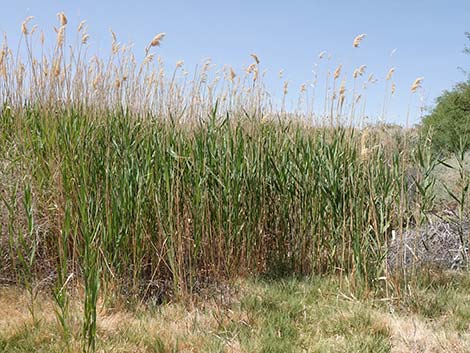 |
General: Common Reed (Phragmites australis) is the second tallest (10-12 feet) species of grass in the Mojave Desert, looking more like bamboo than a typical grass. While Common Reed is native to this area, this variety is the invasive European form, and none of our natives remain. Common Reed is growing throughout desert wetland areas taking over and choking out native species. Growing from underground rhizomes, it is very difficult to control. Common Reed is recognized by stature and the inflorescences that look like candle flames atop the stalk. Common Reed is an uncommon component of wet vegetation associations (wetlands, along washes and rivers) in the Lower Sonoran (Creosote-Bursage Flats) and Upper Sonoran (Mojave Desert Scrub and Pinyon-Juniper Woodland) life zones. Family: Grass (Poaceae). Other Names: Phragmites, Phragmites communis. |
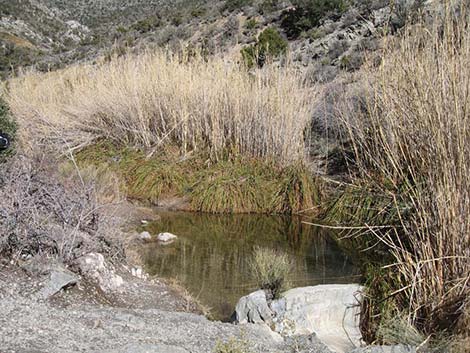 |
Plant Form: Tall, perennial grass forming dense stands from underground rhizomes. Height: 10-12 feet. Stems: Stem tall, erect, round, hollow. Leaves: Alternate, 2-ranked, linear; blades 10-20 inches long, 1/2 to 2 inches wide. At the base of each leaf, Common Reed has an open sheath (the base of the leaf does not wrap all the way around the stem), and there is no collar (wide spot at the base of the leaf). Flowers: Blooms July through November. Inflorescence panicle-like, to 2-feet long, plume-like, oblong. |
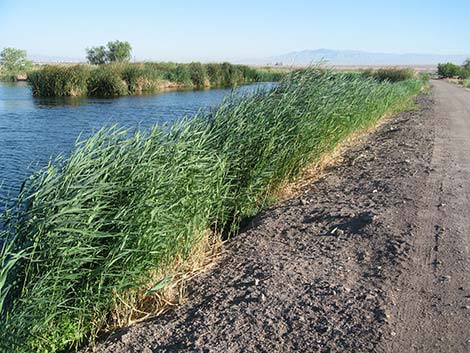 |
Seeds: Tiny, achene-like grain (like a tiny sunflower seed). Habitat: Pond edges, springs, stream edges, riverbanks, and other wet areas. Elevation: To about 5,500 feet. Distribution: Worldwide. Comments: Common Reed is considered a noxious weed in some places, and currently there is false debate among desert ecologists as to whether this species should be considered a native plant or an alien, invasive plant. It certainly is an invasive species that grows in dense, monotypic stands and crowds out other wetland species. |
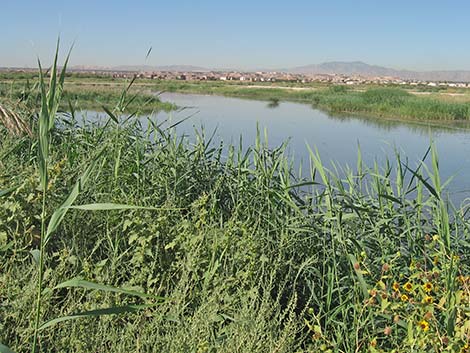 |
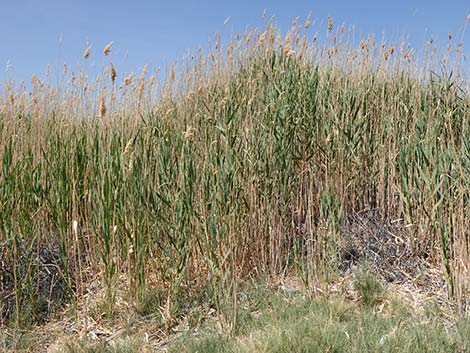 |
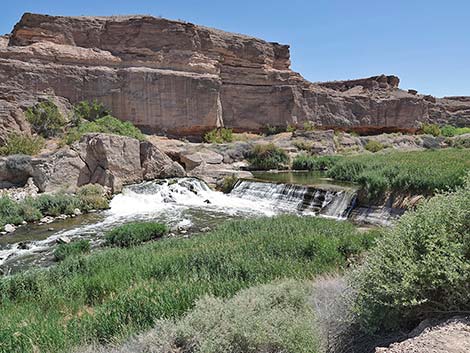 |
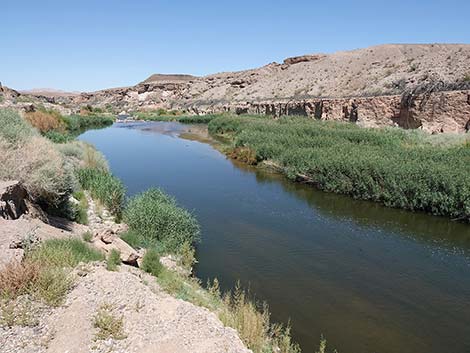 |
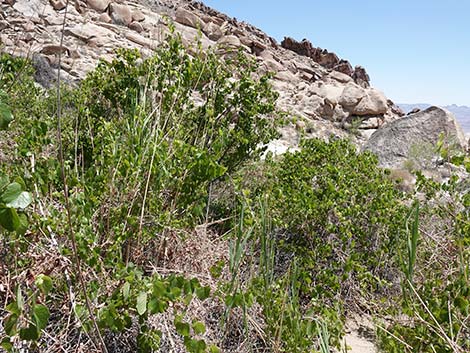 Common Reed getting started in a desert riparian area |
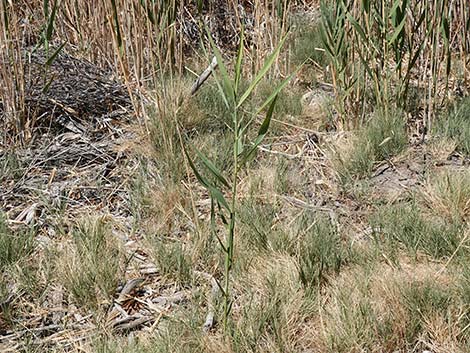 The plant can spread quickly as underground rhizomes grow quickly |
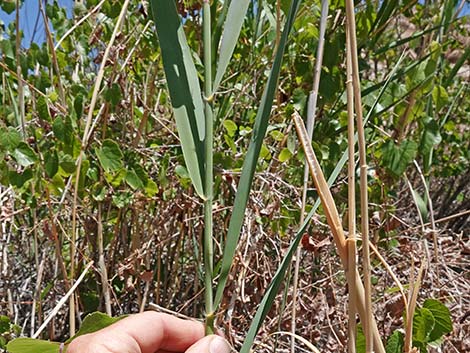 |
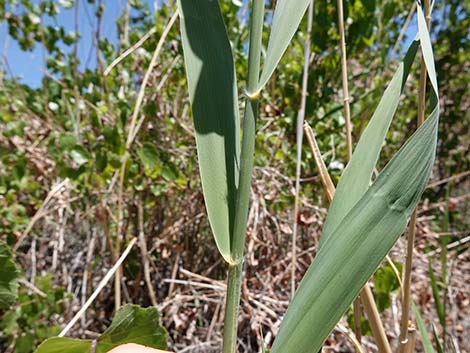 |
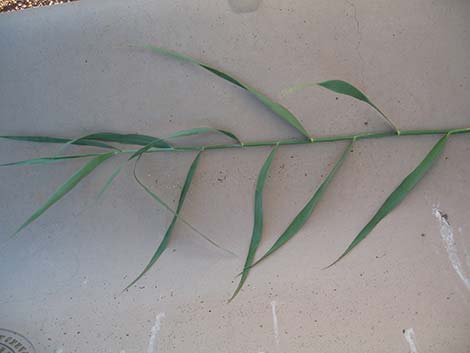 Each leaf is less than 1.5 feet long |
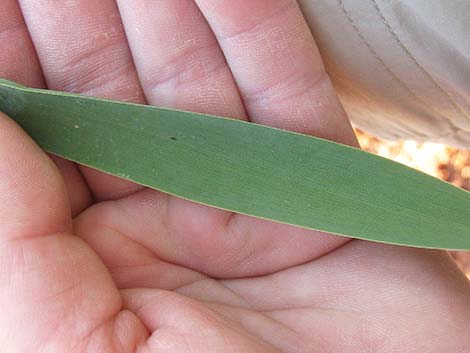 Leaf blade 1- to 5-cm wide |
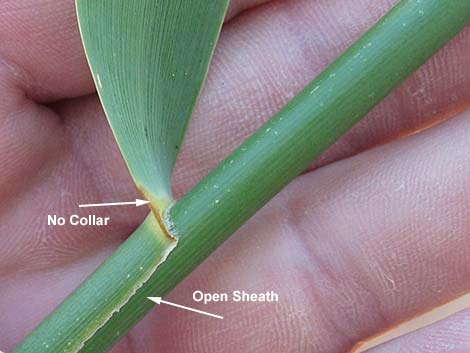 Open sheath and no collar |
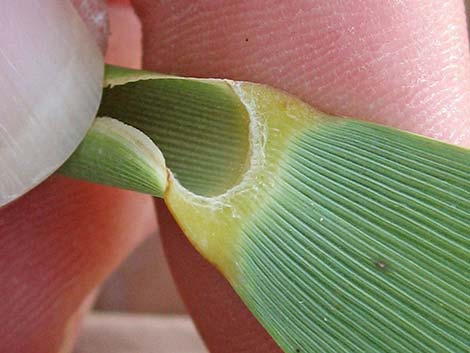 Leaves peal easily from the stem because the sheath is open |
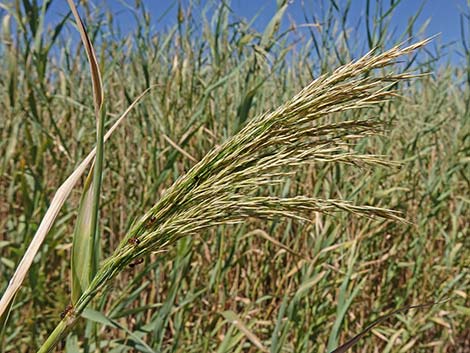 Flowerheads and flowers |
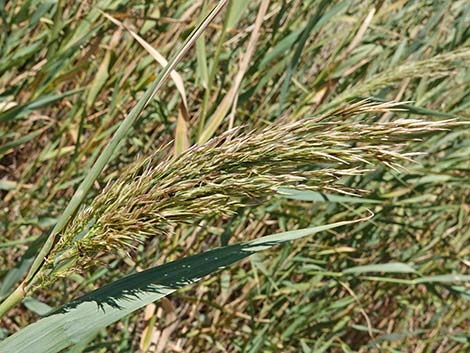 Flowerheads and flowers |
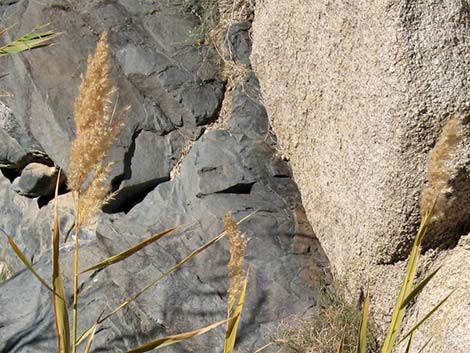 Dried flowerhead |
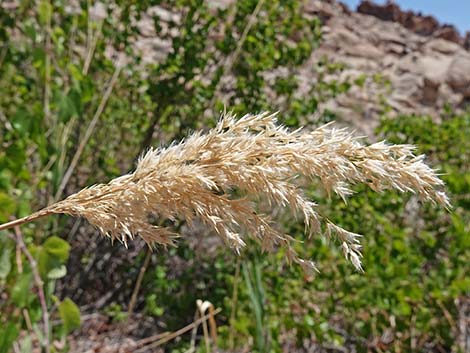 Dried flowerhead |
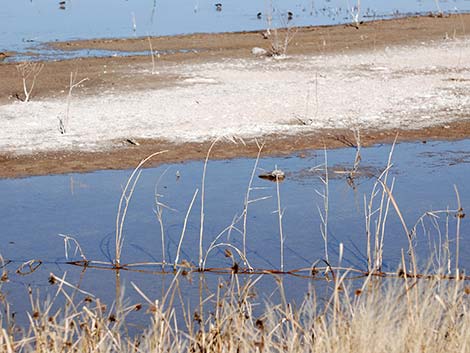 Rhizome visible as this plant spreads across a marsh |
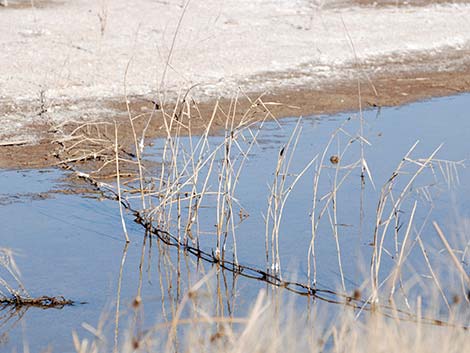 Rhizome visible as this plant spreads across a marsh |
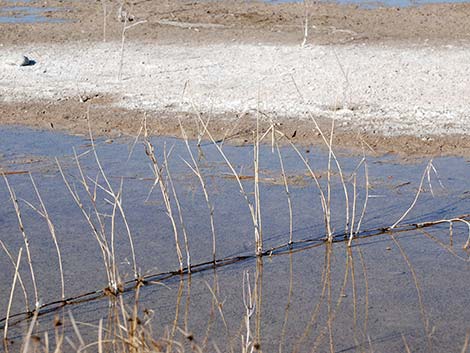 Rhizome visible as this plant spreads across a marsh |
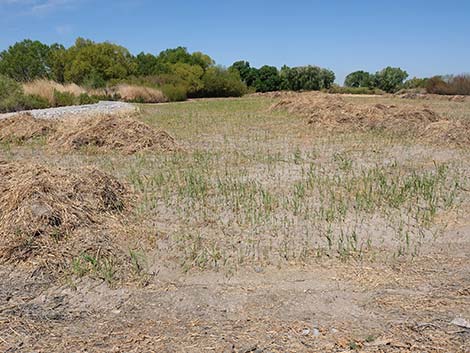 After cutting, Common Reed quickly grows back |
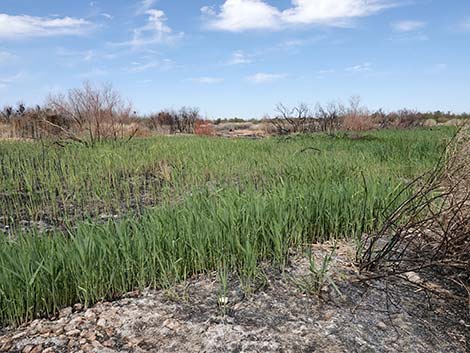 After burning, Common Reed quickly grows back |
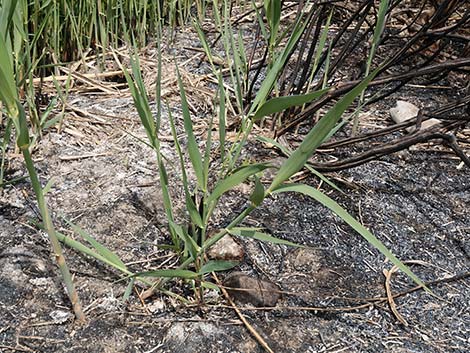 After burning, Common Reed quickly grows back |
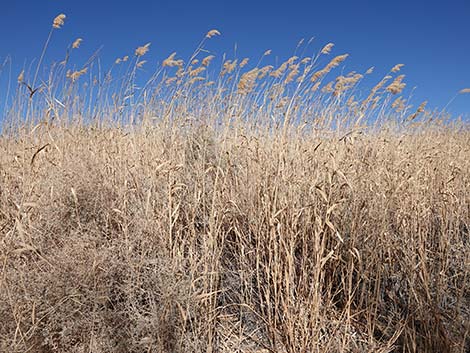 Dried plants remain standing during winter providing fuel for fires |
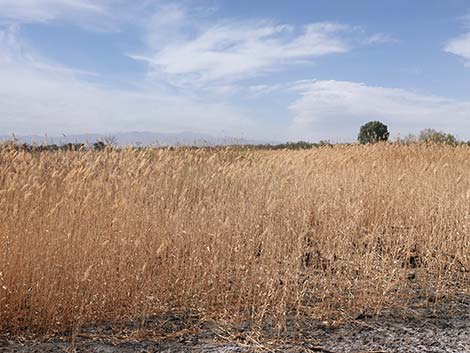 Dried plants remain standing during winter providing fuel for fires |
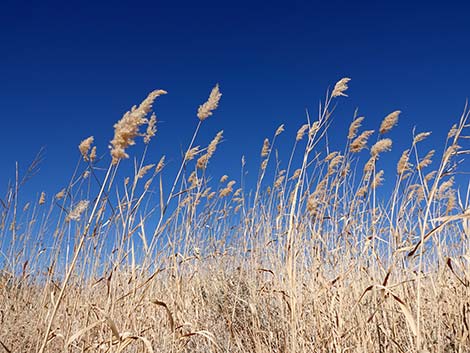 Dried seedheads remain attached during winter |
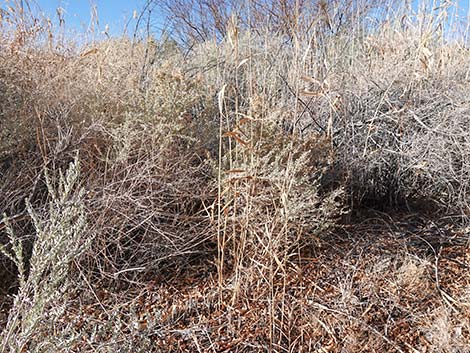 Dried plants remain standing during winter |
Note: All distances, elevations, and other facts are approximate. Names generally follow the USDA database.
![]() ; Last updated 240911
; Last updated 240911
| All Grasses | Plant Species Index | Glossary | Copyright, Conditions, Disclaimer | Home |